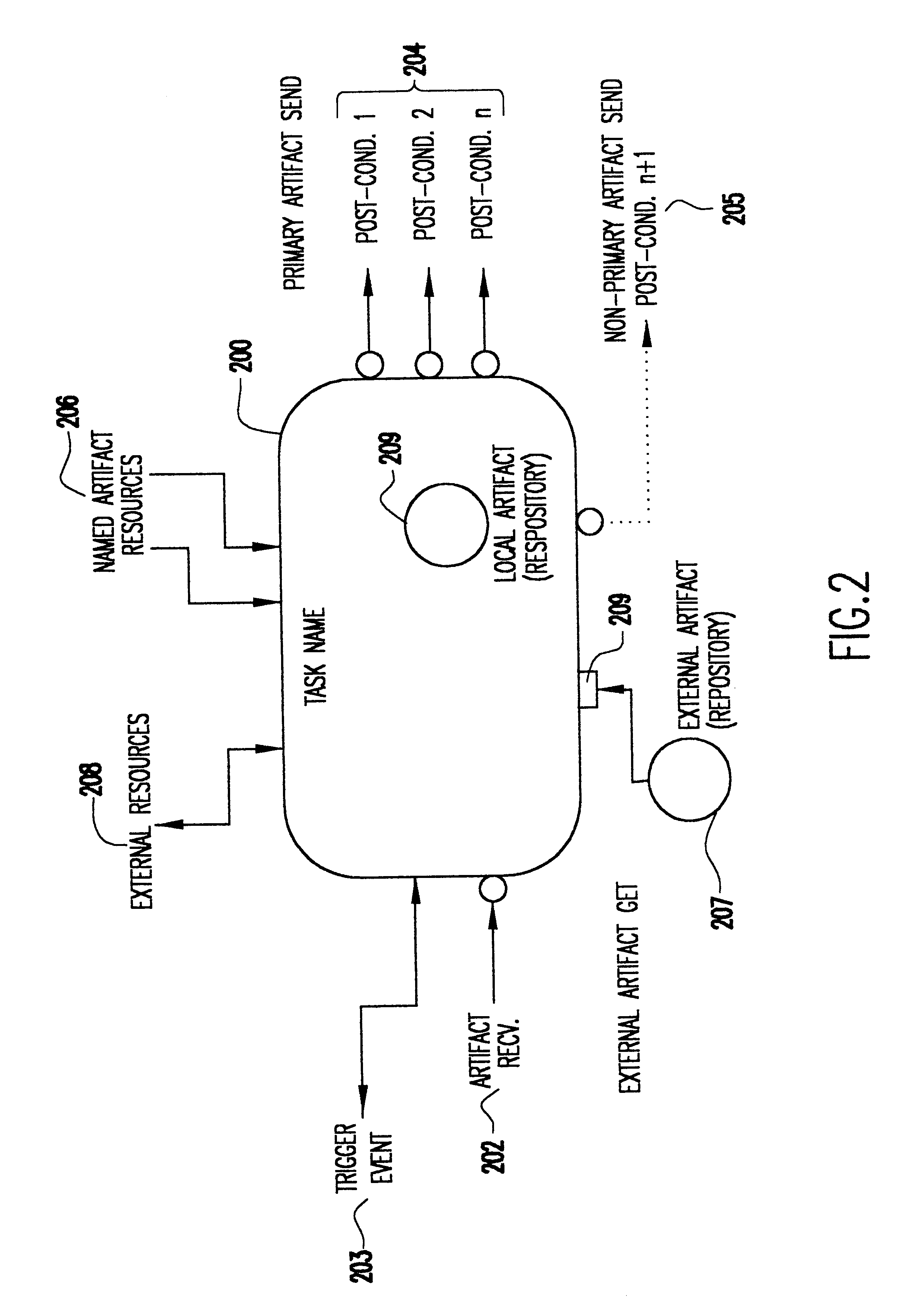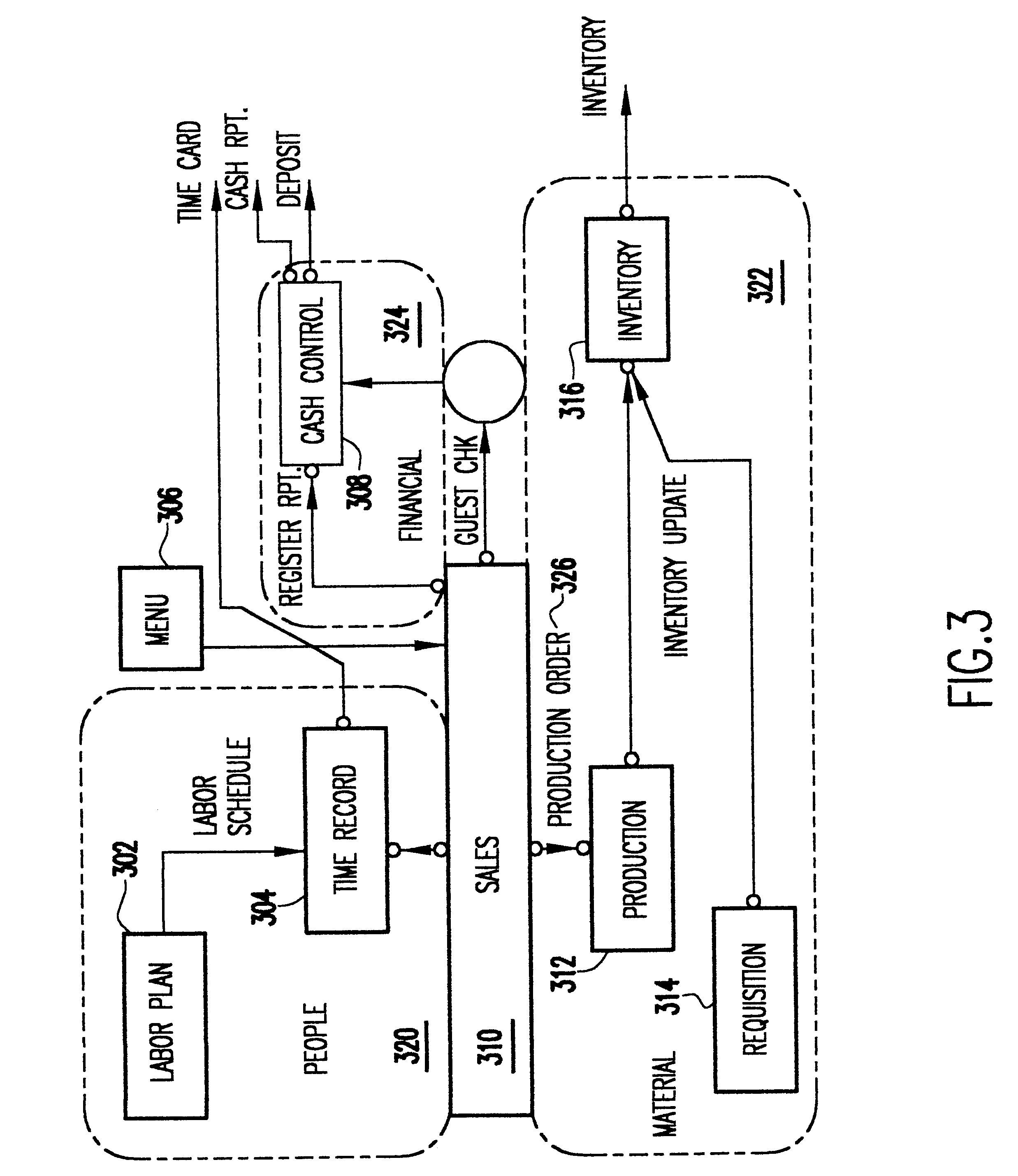Method and system for specifying and implementing automation of business processes
a business process and automation technology, applied in the field of business automation systems, can solve the problems of affecting the control of the business over the automation system, requiring a long complex series of transformations, and a difficult path to operational automation
- Summary
- Abstract
- Description
- Claims
- Application Information
AI Technical Summary
Benefits of technology
Problems solved by technology
Method used
Image
Examples
Embodiment Construction
The concrete elements by which the invention solves the problems listed above are a factorization of a business model into Business Artifact Instances, Business Artifact Categories, Business Tasks, and Business Flow Topologies. In order to better explain the method of the invention, the sales process in quick service restaurants is used as illustration.
Referring now to the drawings, and more particularly to FIG. 1, there is shown a simplified example IF.sup.2 model. In this example of the sales process, the primary artifact is the Guest Receipt 100. The tasks required for a completed sale are CreateOrder 102, EditOrder 104, Delivery 106, and Tender 108. Menu 110 is an external information resource while ProductionOrder 112 and CashReport 114 are artifacts created by the sales process and processed by the ProductionProcess 116 and CashReportProcess (not shown) processes respectively. The EditOrder task is connected to a process with a dashed line. This indicates that the Production P...
PUM
 Login to View More
Login to View More Abstract
Description
Claims
Application Information
 Login to View More
Login to View More - R&D
- Intellectual Property
- Life Sciences
- Materials
- Tech Scout
- Unparalleled Data Quality
- Higher Quality Content
- 60% Fewer Hallucinations
Browse by: Latest US Patents, China's latest patents, Technical Efficacy Thesaurus, Application Domain, Technology Topic, Popular Technical Reports.
© 2025 PatSnap. All rights reserved.Legal|Privacy policy|Modern Slavery Act Transparency Statement|Sitemap|About US| Contact US: help@patsnap.com



